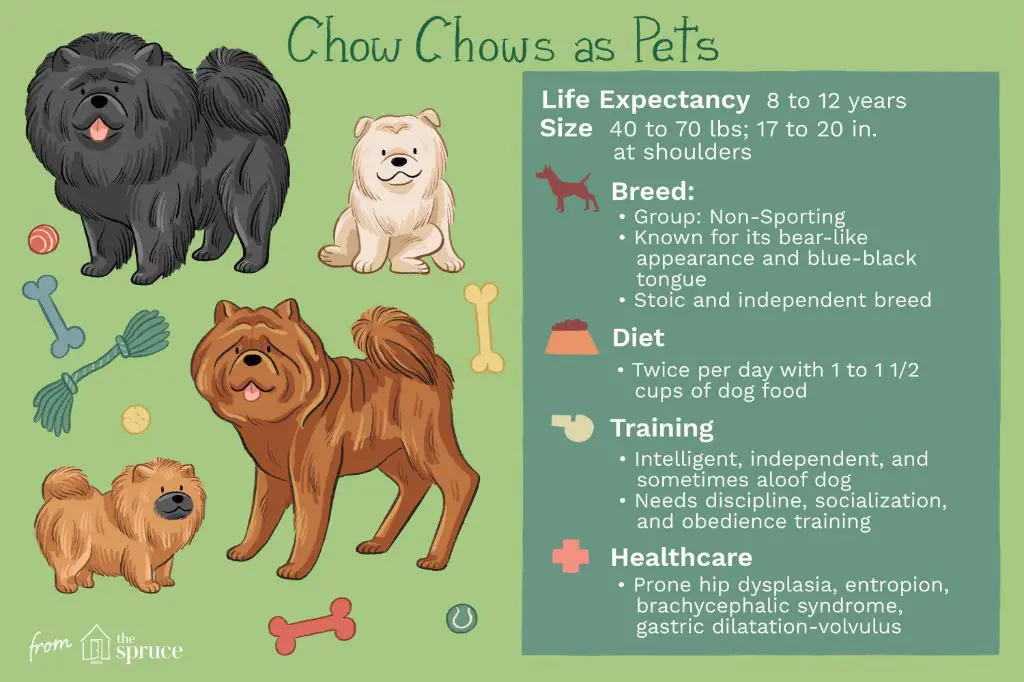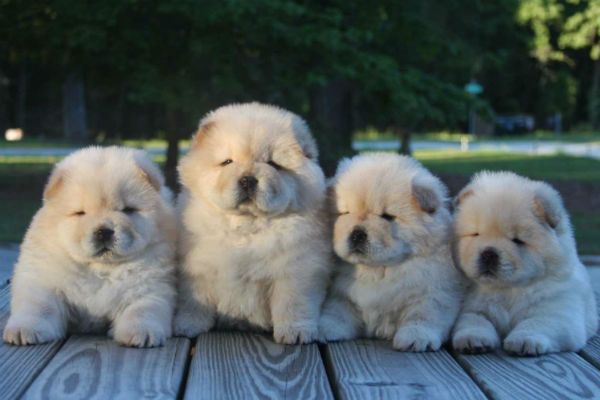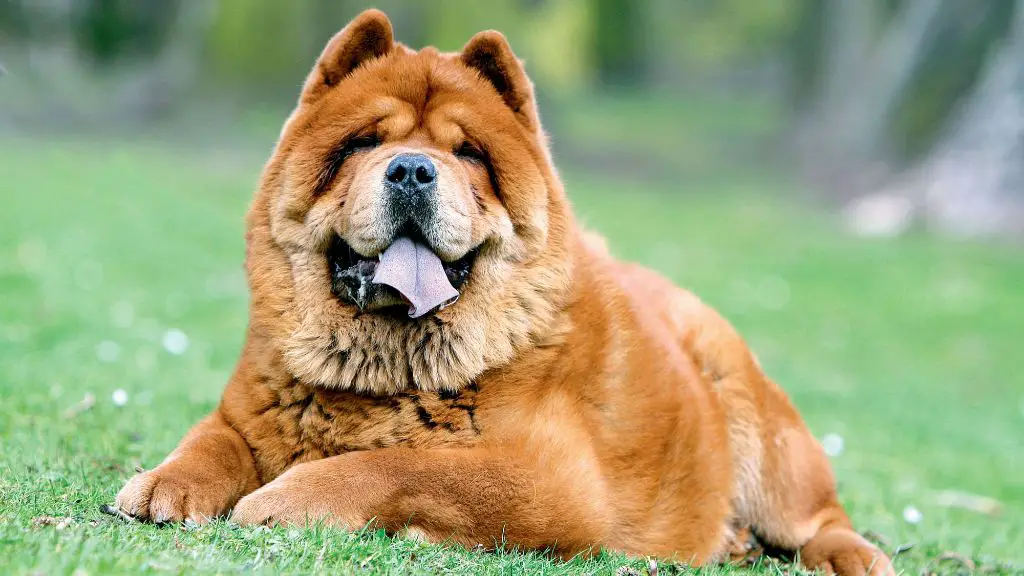Introduction
The Chow Chow is a unique and ancient dog breed that originated in China. Originally bred for a variety of working purposes, the Chow Chow has become a beloved companion dog around the world. This article will provide an overview of the Chow Chow, including its origin and history, physical characteristics, temperament, the decline and resurgence of its popularity, care and training recommendations, modern day roles and uses, notable Chow Chow dogs, and some fun facts about the breed.
Origin and History
The Chow Chow originated in northern China over 2000 years ago. It is believed that these dogs initially served several purposes, having been used as working dogs for herding, hunting, pulling sleds, and guarding. The Chow Chow has ancient roots and is referred to as one of the oldest dog breeds in the world. The dogs were also bred for their fluffy fur and meat, which is a big part of the Chow Chow’s history in China.
During the Tang Dynasty (AD 600s – 900s), the breed became quite popular as pets and symbols among Chinese royalty. Chows were further utilized by Chinese merchants to help pull the carts which carried goods along the Silk Road trade route to the Middle East. The dogs’ thick fur protected them from harsh weather conditions experienced in the Himalayan mountains.
Chow Chows first arrived in Europe in the late 1800s, when Queen Victoria acquired some Chows and helped popularize the breed in the Western world. The dogs made their way to America in the early 20th century. While Chows grew quite popular for some time in America and Europe, their popularity later declined significantly. In recent decades, however, the breed has experienced resurgence in the U.S. as an intriguing and fashionable dog.
Physical Characteristics

The Chow Chow has a number of distinctive physical features that set it apart from other dog breeds. Its lion-like appearance comes from its large, broad head, puffed-up mane of fur around the neck and shoulders, and straight, muscular hind legs, giving it a rather bear-like stance.
Their coat is known to be very thick and dense and can come in a variety of colors including red, black, blue, cinnamon, and cream. Some Chow Chows may have lighter shadings on the ears or other regions. The tongue and inside of the mouth has a bluish-black coloring.
Chow Chows have a very bushy, plumed tail that curves up over the back. Their furry coat gives them a padded look and makes their actual body shape difficult to discern beneath all that fluff. According to the AKC breed standard, male Chow Chows stand 17 – 20 inches at the shoulder, and females are 17 – 19 inches tall.
Overall, the Chow Chow has a very distinctive appearance unlike any other breed, with its dense double coat, lion’s mane ruff, blue-black tongue, bear-like stance and curly plumed tail.
Temperament
Chow Chows are known for being loyal and protective of their owners. They form strong bonds with their families and can be wary of strangers. Without proper socialization, Chow Chows may be aggressive toward unfamiliar people or animals. According to the American Kennel Club, “Chows are independent, serious-minded dogs who bond intensely with their family…[they] need early socialization and obedience training”.
Chow Chows tend to be independent and stubborn. They are intelligent but not easy to train. This means they require patience and consistency when training. Chow Chows will respond better to positive reinforcement techniques. Their independent nature also means they can be left alone for periods of time without suffering from separation anxiety.
Overall, Chow Chows are devoted and protective pets but require proper training and socialization, especially when young, to ensure good behavior around strangers and other animals.
Popularity Decline and Resurgence
The Chow Chow almost went extinct in their native China after World War II. During the war, extreme food shortages led to many Chows being slaughtered for their meat and fur. Their numbers dropped dramatically and some estimated only a few hundred survived in China. It took decades for the breed’s population to recover. Chow Chows began increasing again in China in the 1980s as the country became more prosperous.

Meanwhile, the Chow Chow rose greatly in popularity in Europe and America starting in the late 1800s. Wealthy aristocrats and nobles, including Queen Victoria, were enamored with exotic Chinese imports. Chow Chows were displayed at dog shows and were featured prominently in publications. This exposure increased demand for the breed in the West. However, after World War I, Chow Chows began declining in popularity as other breeds became more fashionable. Their rarity today reflects their near extinction in China and oscillating popularity in Europe and America over the past century.
Care and Training
Chow Chows have high grooming needs due to their thick double coat. They require daily brushing to prevent tangling and matting. Their undercoat sheds heavily twice a year, so additional brushing during shedding season is important. Weekly baths may be needed if the Chow Chow spends a lot of time outdoors. Their coats can be trimmed occasionally for neatness.
Chow Chows have moderate exercise needs, requiring 30-60 minutes of activity per day. A daily walk plus playtime in a fenced yard provides sufficient exercise. Chow Chows enjoy cooler weather and may overheat in very hot climates.
Some of the common health issues seen in Chow Chows include hip and elbow dysplasia, patellar luxation, thyroid problems, and eye conditions like entropion. Responsible breeders screen for these conditions. Chow Chows have an average lifespan of 8-12 years.
Chow Chows can be independent and aloof, making training challenging at times. Early socialization and obedience training is essential, using positive reinforcement techniques. Chow Chows may be aggressive toward other dogs, so care should be taken when socializing them. Their strong guarding instincts mean they need to be taught what is and isn’t a threat (Source). Patience and consistency are key when training a Chow Chow.
Role and Uses Today
Chow Chows are no longer used for their fur or meat today. According to AZ Animals, Chow Chows now primarily serve as companion animals and household pets.
The Chow Chow was first registered with the American Kennel Club in 1903 and was classified as a member of the Non-Sporting group. Today, Chow Chows are popular show dogs, loved for their unique appearance and dignified demeanor in the ring. Their lush coats make them eye-catching contenders in conformation shows.
While they can make loyal family pets, Chow Chows tend to be aloof and disinterested in strangers. They need extensive socialization from an early age. Chow Chows can be aggressive toward other dogs, so care should be taken when introducing them to new canine companions.
With proper training and socialization, the loyal and protective Chow Chow can make a devoted companion at home. But their days as working dogs providing fur and meat are long gone.
Notable Chow Chows

Chow Chows have been owned by many famous figures throughout history. Some of their most well-known owners include Sigmund Freud, Martha Stewart, Jennifer Aniston, Calvin Coolidge, Konrad Adenauer, and Elvis Presley. Chow Chows have also made numerous appearances in TV shows, movies, and other pop culture over the years.
In the 1960s TV show Harry and the Hendersons, the Henderson family had a Chow Chow named Brandy. More recently, a Chow Chow named Bear appeared in the 2008 Marvel movie The Incredible Hulk. The dog who portrayed Cheddar on the TV show Brooklyn Nine-Nine is also a Chow Chow. Additionally, Chow Chows have been featured in movies like The Shaggy Dog and television shows such as Futurama, Lost, and Hart to Hart.
Some specific Chow Chows that have gained notoriety include Fluffy, pet of President Coolidge, and Teddy, pet of John F. Kennedy and Jacqueline Kennedy Onassis. The Kennedys’ dog Teddy was said to be fiercely protective of them.
Fun Facts
Chow Chows have a number of interesting quirks that make them a unique breed. Here are some fun facts about Chow Chows:
Chow Chows have blue-black tongues which is a very rare trait among dogs. Their tongues can also have pink spots which is considered a defect by breed standards (https://www.akc.org/dog-breeds/chow-chow/).
Chow Chows hold the record for the world’s longest tongue, with a Chow named Brandy holding the record at 18.58 cm (7.3 in) (https://www.guinnessworldrecords.com/world-records/longest-tongue-on-a-dog).
Chow Chows have very straight hind legs, giving them a unique stilted gait when they walk.
Chow Chows are not well-suited for hot weather due to their dense coat. They prefer cool climates.
Chow Chows are often very independent and aloof, even with their owners. They are not overly affectionate dogs.
Their furry mane gives them the appearance of a miniature lion or bear cub.
Chow Chows were used as working dogs in their native China, pulling sleds, herding livestock, and guarding property.
They were featured on ancient Chinese pottery and sculptures dating back to 150 BC.
Chow Chows have a very high prey drive and may not get along well with smaller pets.
The Chow Chow is one of the few ancient dog breeds still in existence today.
Conclusion
In summary, the chow chow is an ancient dog breed that originated in China. Originally bred for multiple purposes like hunting, herding, pulling sleds and guarding, their thick coats made them desirable for their fur and meat. While their popularity declined in the early 20th century, they have seen a resurgence more recently as a companion dog.
Some key things to know about chow chows are their distinctive bluish-black tongue, aloof and independent personality, and their need for early socialization and training. Their lion-like mane gives them a unique appearance. While potentially wary of strangers, chow chows are known to be loyal and protective of their families.
The chow chow holds an important place in Chinese history, having been companions of Chinese nobles for centuries. Their resilience has allowed them to survive up to modern times. For owners who can accommodate their special needs, chow chows can make faithful and entertaining pets. Overall, the chow chow is a one-of-a-kind breed with an enduring legacy.

